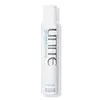What's inside
What's inside
 Key Ingredients
Key Ingredients

No key ingredients
 Benefits
Benefits

 Concerns
Concerns

 Ingredients Side-by-side
Ingredients Side-by-side

Water
Skin ConditioningCetearyl Alcohol
EmollientBehentrimonium Chloride
PreservativeCetyl Alcohol
EmollientAmodimethicone
Hydrogenated Ethylhexyl Olivate
EmollientParfum
MaskingCetyl Esters
EmollientIsododecane
EmollientPropanediol
SolventPhenoxyethanol
PreservativeStearamine Oxide
CleansingIsopropyl Alcohol
SolventGuar Hydroxypropyltrimonium Chloride
Skin ConditioningEthylhexylglycerin
Skin ConditioningPolysorbate 60
EmulsifyingHydrogenated Olive Oil Unsaponifiables
EmollientHydroxyethylcellulose
Emulsion StabilisingButyrospermum Parkii Butter
Skin ConditioningPanthenol
Skin ConditioningTetrasodium EDTA
C11-15 Pareth-7
EmulsifyingCaprylyl Glycol
EmollientLaureth-9
EmulsifyingJojoba Esters
EmollientCetrimonium Chloride
AntimicrobialTrideceth-15
EmulsifyingTrideceth-3
EmulsifyingPentaerythrityl Tetra-Di-T-Butyl Hydroxyhydrocinnamate
AntioxidantGlycerin
HumectantBHT
AntioxidantTrideceth-12
EmulsifyingPolysilicone-15
UV FilterShorea Stenoptera Seed Butter
EmollientQuaternium-95
UV AbsorberAcetic Acid
BufferingCitric Acid
BufferingMoringa Oleifera Seed Oil
EmollientPrunus Domestica Seed Oil
Skin ConditioningAlcohol
AntimicrobialOctocrylene
UV AbsorberDisodium Phosphate
BufferingButyl Methoxydibenzoylmethane
UV AbsorberTocopherol
AntioxidantSodium Phosphate
BufferingButylene Glycol
HumectantCystine Bis-Pg-Propyl Silanetriol
Skin ConditioningHydrolyzed Vegetable Protein Pg-Propyl Silanetriol
Skin ConditioningHydrolyzed Vegetable Protein
Skin ConditioningTocopheryl Acetate
AntioxidantLeontopodium Alpinum Extract
Skin ConditioningAmber Extract
Skin ConditioningCitrullus Lanatus Fruit Extract
Skin ConditioningSodium Hydroxide
BufferingPotassium Sorbate
PreservativeSodium Benzoate
MaskingOryza Sativa Seed Protein
AntioxidantPhytic Acid
Oryza Sativa Extract
AbsorbentCitrulline
Skin ConditioningDisodium EDTA
Gluconolactone
Skin ConditioningLitchi Chinensis Pericarp Extract
Skin ConditioningMoringa Oleifera Seed Extract
Skin ConditioningCalcium Gluconate
HumectantLimonene
PerfumingHexyl Cinnamal
PerfumingWater, Cetearyl Alcohol, Behentrimonium Chloride, Cetyl Alcohol, Amodimethicone, Hydrogenated Ethylhexyl Olivate, Parfum, Cetyl Esters, Isododecane, Propanediol, Phenoxyethanol, Stearamine Oxide, Isopropyl Alcohol, Guar Hydroxypropyltrimonium Chloride, Ethylhexylglycerin, Polysorbate 60, Hydrogenated Olive Oil Unsaponifiables, Hydroxyethylcellulose, Butyrospermum Parkii Butter, Panthenol, Tetrasodium EDTA, C11-15 Pareth-7, Caprylyl Glycol, Laureth-9, Jojoba Esters, Cetrimonium Chloride, Trideceth-15, Trideceth-3, Pentaerythrityl Tetra-Di-T-Butyl Hydroxyhydrocinnamate, Glycerin, BHT, Trideceth-12, Polysilicone-15, Shorea Stenoptera Seed Butter, Quaternium-95, Acetic Acid, Citric Acid, Moringa Oleifera Seed Oil, Prunus Domestica Seed Oil, Alcohol, Octocrylene, Disodium Phosphate, Butyl Methoxydibenzoylmethane, Tocopherol, Sodium Phosphate, Butylene Glycol, Cystine Bis-Pg-Propyl Silanetriol, Hydrolyzed Vegetable Protein Pg-Propyl Silanetriol, Hydrolyzed Vegetable Protein, Tocopheryl Acetate, Leontopodium Alpinum Extract, Amber Extract, Citrullus Lanatus Fruit Extract, Sodium Hydroxide, Potassium Sorbate, Sodium Benzoate, Oryza Sativa Seed Protein, Phytic Acid, Oryza Sativa Extract, Citrulline, Disodium EDTA, Gluconolactone, Litchi Chinensis Pericarp Extract, Moringa Oleifera Seed Extract, Calcium Gluconate, Limonene, Hexyl Cinnamal
Alcohol Denat.
AntimicrobialHydrofluorocarbon 152a
Caprylic/Capric Triglyceride
MaskingPhenyl Trimethicone
Skin ConditioningIsododecane
EmollientEthylhexyl Olivate
Skin ConditioningHelianthus Annuus Seed Extract
Skin ConditioningHydrolyzed Vegetable Protein Pg-Propyl Silanetriol
Skin ConditioningParfum
MaskingSqualene
EmollientButylene Glycol
HumectantPolyquaternium-59
UV AbsorberCitral
PerfumingEugenol
PerfumingGeraniol
PerfumingLimonene
PerfumingLinalool
PerfumingAmyl Cinnamal
PerfumingHexyl Cinnamal
PerfumingAlcohol Denat., Hydrofluorocarbon 152a, Caprylic/Capric Triglyceride, Phenyl Trimethicone, Isododecane, Ethylhexyl Olivate, Helianthus Annuus Seed Extract, Hydrolyzed Vegetable Protein Pg-Propyl Silanetriol, Parfum, Squalene, Butylene Glycol, Polyquaternium-59, Citral, Eugenol, Geraniol, Limonene, Linalool, Amyl Cinnamal, Hexyl Cinnamal
Ingredients Explained
These ingredients are found in both products.
Ingredients higher up in an ingredient list are typically present in a larger amount.
Butylene Glycol (or BG) is used within cosmetic products for a few different reasons:
Overall, Butylene Glycol is a safe and well-rounded ingredient that works well with other ingredients.
Though this ingredient works well with most skin types, some people with sensitive skin may experience a reaction such as allergic rashes, closed comedones, or itchiness.
Learn more about Butylene GlycolHexyl Cinnamal is a fragrance ingredient with a similar scent to jasmine. It can be naturally found in chamomile essential oil.
This ingredient is a known EU allergen and may sensitize the skin. The EU requires this ingredient to be listed separately on an ingredients list.
Hexyl Cinnamal is not water soluble but is soluble in oils.
Learn more about Hexyl CinnamalWe don't have a description for Hydrolyzed Vegetable Protein Pg-Propyl Silanetriol yet.
Isododecane is a fragrance, emollient, and solvent.
As an emollient, it helps your skin stay soft and hydrated. Emollients help trap moisture into your skin.
Isododecane's role as a solvent makes it a great texture enhancer. It spreads smoothly on skin and does not leave a sticky feeling behind. Isododecane also helps prevent color transfer in makeup products.
Isododecane is not absorbed into skin.
Learn more about IsododecaneLimonene is a fragrance that adds scent and taste to a formulation.
It's found in the peel oil of citrus fruits and other plants such as lavender and eucalyptus. The scent of limonene is generally described as "sweet citrus".
Limonene acts as an antioxidant, meaning it helps neutralize free radicals.
When exposed to air, oxidized limonene may sensitize the skin. Because of this, limonene is often avoided by people with sensitive skin.
The term 'fragrance' is not regulated in many countries. In many cases, it is up to the brand to define this term. For instance, many brands choose to label themselves as "fragrance-free" because they are not using synthetic fragrances. However, their products may still contain ingredients such as essential oils that are considered a fragrance.
Learn more about LimoneneParfum is a catch-all term for an ingredient or more that is used to give a scent to products.
Also called "fragrance", this ingredient can be a blend of hundreds of chemicals or plant oils. This means every product with "fragrance" or "parfum" in the ingredients list is a different mixture.
For instance, Habanolide is a proprietary trade name for a specific aroma chemical. When used as a fragrance ingredient in cosmetics, most aroma chemicals fall under the broad labeling category of “FRAGRANCE” or “PARFUM” according to EU and US regulations.
The term 'parfum' or 'fragrance' is not regulated in many countries. In many cases, it is up to the brand to define this term.
For instance, many brands choose to label themselves as "fragrance-free" because they are not using synthetic fragrances. However, their products may still contain ingredients such as essential oils that are considered a fragrance by INCI standards.
One example is Calendula flower extract. Calendula is an essential oil that still imparts a scent or 'fragrance'.
Depending on the blend, the ingredients in the mixture can cause allergies and sensitivities on the skin. Some ingredients that are known EU allergens include linalool and citronellol.
Parfum can also be used to mask or cover an unpleasant scent.
The bottom line is: not all fragrances/parfum/ingredients are created equally. If you are worried about fragrances, we recommend taking a closer look at an ingredient. And of course, we always recommend speaking with a professional.
Learn more about Parfum